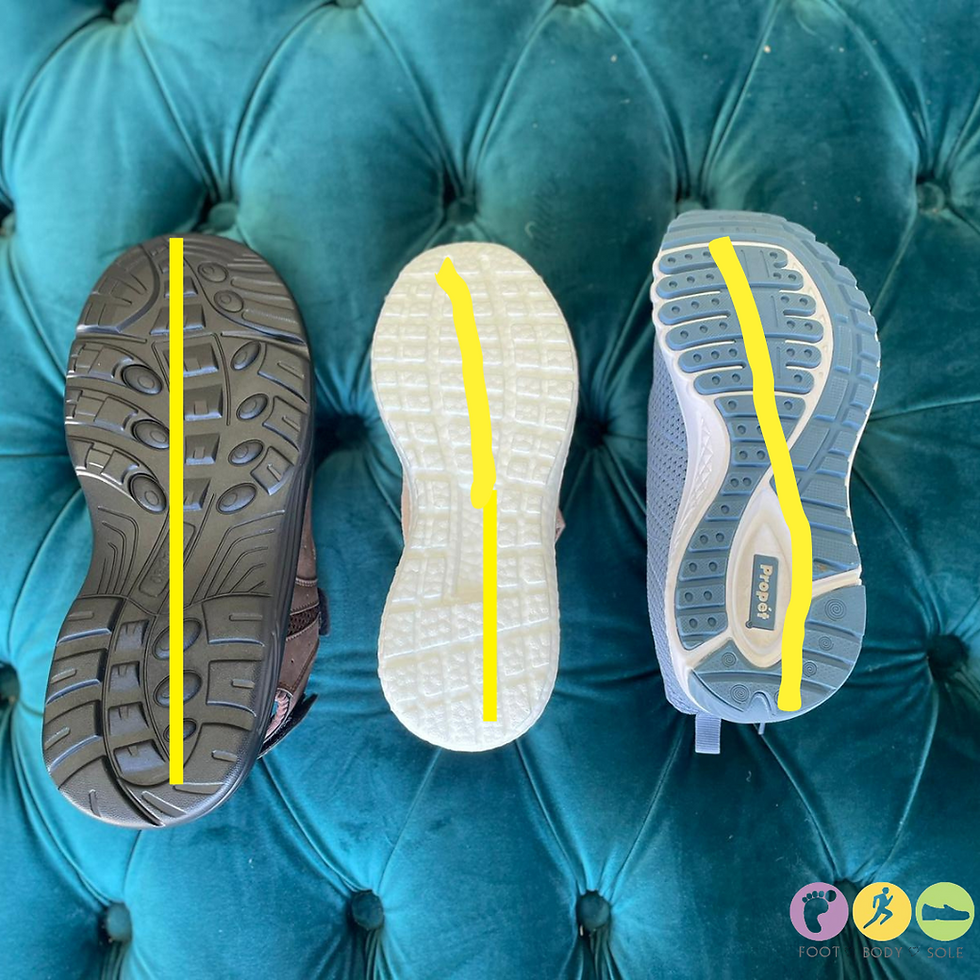What running style suits you?
- Foot Body Sole
- Apr 16, 2020
- 3 min read
Have you recently started running?
Are you starting to get aches and pains after or during running? Read this now to find out why, and what you can do to stop it!
Everybody is different, and this could not be more true for running. Everyone runs a different way, and generally, we divide people into three typical running styles: forefoot, midfoot, or rearfoot striking.
These different styles are distinguished by which part of your foot you hit the ground with first at the beginning of each step.

Why does this matter?
Each different running style creates a completely different load pattern in your body, from your feet all the way up to your head. A forefoot strike tends to create more stress on the muscles and structures on the front of your body, like your shins and quadriceps muscles. Whereas a rearfoot strike tends to create more stress on the structures on the back of your body, like your glutes and hamstrings.
If you are putting TOO MUCH stress on one side of the body, it can create an imbalance in strength, or even overload the muscles to the point of injury. This is how injuries like shin splints, achilles tendinopathy, and plantar fasciitis can occur!
What should you do?
There are three main points of advice we can give you now to better equip you to reach your running goals, and they are:

1. Make sure your equipment is up to scratch!
Running in non-supportive footwear that has worn through all its tread can be detrimental to your body by increasing the pressure taken by your feet and body. Interestingly enough, both old and worn out shoes AND brand-new running shoes have been showed to INCREASE the pressure your body takes when running. Because of this, we recommend wearing in brand new runners gradually, and replacing them when you see the outer layer of the sole starting to wear through to the foam underneath.
If your shoes look like this, then it's time to update!
2. Combine running with stretching and strengthening!
Running is hard work, and it becomes even harder if your body isn't prepared. It is crucial that if you are going to start running, you prepare and strengthen your body appropriately, and so we highly recommend including a general stretching and strengthening program into your training routine, to ensure that your muscles are loose enough and strong enough to deal with the high load created by running! The same exercises won't work for everyone, but some such as calf raises, squats, lateral leg raises, and sit ups all target the muscles you need to run!
3. Build into your running slowly!

When you begin a new activity, it takes time for your muscles to adapt.
If you have never run before, the muscles you use to run have likely been neglected and lose their strength and endurance. This means if you try and go from zero to hero too quickly, these muscles will be overworked and overloaded, and this can lead to injury! We recommend building into your running slowly, increasing your load week to week by about 10 percent, this will give you the best chance to stay injury free whilst still progressing! As well as this, we also recommend spreading out your running load over multiple smaller runs rather than one big run per week, this will help reduce the load on your body whilst still getting the exercise done!
So what next?
It is true that if not done properly, running can put you at a high risk of injury. However, as long as you follow the above advice, you should be able to navigate your new running career with relative ease. As always, if you have any questions or queries regarding running styles, exercises and stretches, or how much you should be running, then send us a message, give us a call on 1800 778 316, or come into the clinic today! Our podiatrists are well equipped to write an exercise program or a running program for you to get started.









Comments